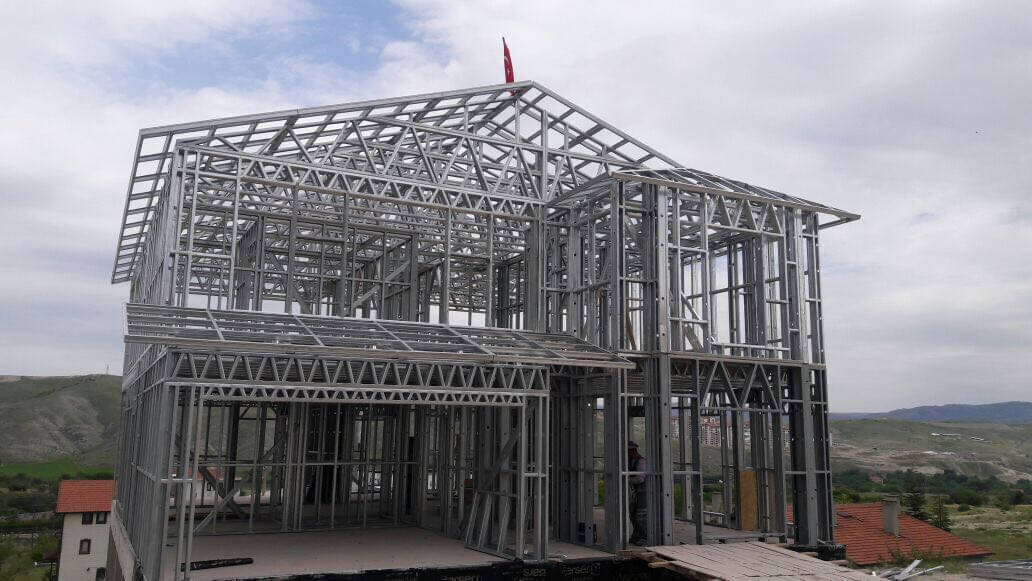How can I install a Prefabricated House?
Introduction
Welcome to our comprehensive guide on installing a prefabricated house. In this article, we will walk you through the step-by-step process of installing a prefabricated house, from understanding the concept of prefabricated houses to the final touches of customization. So, let’s dive right in!
Understanding Prefabricated Houses
Before we jump into the installation process, it’s essential to have a clear understanding of what prefabricated houses are.
A prefabricated house, also known as a prefab house, is a type of building that is constructed off-site in a factory-controlled environment. The components of the house are then transported to the site for assembly. Prefabricated houses offer numerous advantages, including cost-efficiency, shorter construction time, and flexibility in design.
Site Preparation for Installation
Once you have chosen the perfect location for your prefabricated house, it’s crucial to prepare the site properly.
Start by clearing the area of any debris or vegetation that may hinder the installation process. Level the ground and ensure it is free from any obstacles. It’s also essential to check the soil conditions and make any necessary preparations to ensure a solid foundation for your prefabricated house.
Foundation and Anchoring Methods
When it comes to the foundation of your prefabricated house, there are various options to consider.
Common foundation types for prefabricated houses include concrete slab, crawl space, and basement. Each option has its advantages and considerations. Additionally, anchoring methods such as ground anchors or concrete footings may be necessary to secure the house in place, especially in areas prone to high winds or seismic activity.
Assembling the Prefabricated Components
Now comes the exciting part – assembling the prefabricated components of your house.
Follow the manufacturer’s instructions carefully as you connect the prefabricated walls, floors, and roof sections. It’s important to ensure a precise fit and secure each component properly. This is where the expertise of professional installers can be valuable, as they have the experience and knowledge to handle this intricate process.
Electrical and Plumbing Installation
Once the main structure is in place, it’s time to focus on the electrical and plumbing installations.
Consult with professionals to plan the layout of electrical outlets, switches, and plumbing fixtures. Ensure that all installations comply with local building codes and regulations. Proper installation of electrical and plumbing systems is vital for the functionality and safety of your prefabricated house.
Insulation and Wall Finishing
Insulation plays a crucial role in keeping your prefabricated house comfortable and energy-efficient.
Choose insulation materials that are suitable for your climate and install them according to the manufacturer’s guidelines. Once insulation is in place, proceed with wall finishing options such as drywall, paneling, or any other desired materials. Pay attention to the aesthetics and functionality while selecting the wall finishing materials.
Roofing and Exterior Finishing
The roof and exterior finishing are essential for protecting your prefabricated house from the elements.
Select a roofing material that suits your climate and complements the overall design of your house. Install the roof following standard roofing practices. Additionally, consider exterior finishing options such as siding, paint, or cladding to enhance the curb appeal and protect the structure from moisture and other external factors.
Interior Finishing and Customization
Now it’s time to focus on the interior finishing and make your prefabricated house feel like home.
Install flooring, doors, and windows according to your preferences. Pay attention to the layout and design of your interior spaces, ensuring they meet your functional and aesthetic needs. Don’t forget to incorporate any customizations you desire, such as built-in furniture or unique architectural features.
Finalizing the Installation
As you near the completion of the installation process, it’s important to address any final touches and ensure everything is in order.
Inspect the entire house for any remaining tasks, such as touch-up paint, minor repairs, or adjustments. Ensure that all electrical, plumbing, and other systems are functioning correctly. Take the time to double-check the overall quality of the installation before moving on to the next step.
Maintenance and Long-Term Care
Once the installation is complete, it’s crucial to establish a maintenance routine for your prefabricated house.
Regularly inspect the house for any signs of wear or damage. Perform routine maintenance tasks such as cleaning gutters, checking for leaks, and maintaining the HVAC system. By following a proactive maintenance plan, you can prolong the lifespan of your prefabricated house and ensure its continued functionality and aesthetic appeal.
Conclusion
In conclusion, installing a prefabricated house requires careful planning, attention to detail, and adherence to building codes.
By following the steps outlined in this article and seeking professional guidance when needed, you can successfully install a prefabricated house that meets your needs and provides a comfortable living environment. Enjoy the benefits of a well-designed and efficiently constructed home!
We are manufacturing and installing your prefabricated house by your requests. You can contact us for details and installation works!



